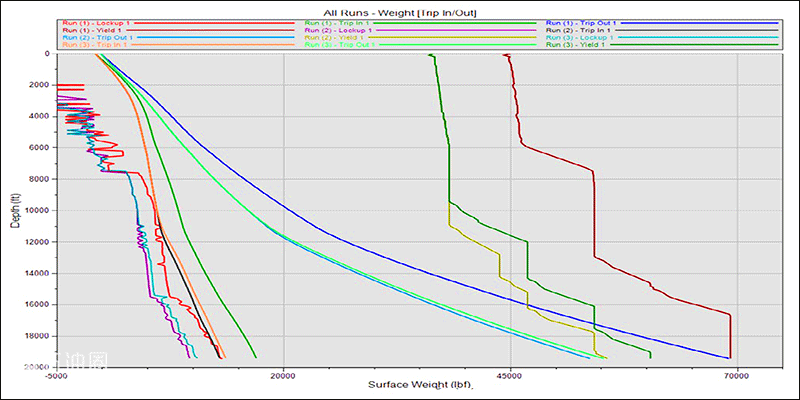Halliburton has recently expanded its software suite to carry out Coiled Tubing design and real-time data acquisition calculations. InSite for Well Intervention software system has been designed, using Halliburton’s own Coiled Tubing experience and testing to produce a tool superior to any available commercially for this application.
Since this new software is built upon the InSite platform used throughout the different Halliburton product lines, Halliburton can make full use of the InSite Anywhere system for remote viewing of the real-time data gathered during higher profile operations. This data can then be viewed from any Internet-connected device, including some smart phones to enable key personnel to watch and make decisions in real-time without actually being on location.
Coiled Tubing Job Design using InSite for Well Intervention
With wells becoming deeper, more highly deviated, and overall more complex, the need for accurate Coiled Tubing design and analysis is becoming more critical. Hydraulics and mechanical forces can now be analyzed in greater detail prior to any operation to help ensure the likelihood of a successful job.
Forces and Stresses
The InSite for Well Intervention Design Forces Module is used to model Coiled Tubing deployment, with or without tools, into and out of a well, using an accurate representation of the wellbore.
The program analyzes the cumulative forces acting at a particular stage of the job and determines whether the target depth can be reached, specified tasks performed, and equipment retrieved to surface. Tis module can be used to simulate any Coiled Tubing operation such as:
•Logging (open-hole and cased-hole)
•Perforating
•Fishing
•Drilling
•Extended-reach applications
•High-pressure applications
The following screenshots show example outputs that can be obtained very quickly to enable analysis of the forces present during a Coiled Tubing operation.
Multiple Case Comparisons
An advanced feature of the InSite for Well Intervention design analysis is the ability to compare several different cases easily during a single design. For instance, to find out which Coiled Tubing string is most suitable for a particular application, the types of tubing can be compared on the one output graph, enabling decisions to be made quickly and easily. These comparisons can be made based on any input parameter. The following screenshots show an example of different string comparisons for a single well.
Coiled Tubing and Well Hydraulics
InSite for Well Intervention has the capability of accurately modeling fluid hydraulics in the Coiled Tubing and wellbore. Fluid flow is influenced by several conditions (including string and wellbore geometry, fluid properties, pump rate, measured depth, choke pressure, and reservoir properties), and slight changes may have minimal or dramatic impacts on the potential success of a job.
The hydraulics simulations in InSite for Well Intervention use the Halliburton Material Library database and calculations, which are based on empirical data gathered from Halliburton’s great wealth of drilling fluids, cementing, stimulation, and fracturing experience. Extensive testing, using fluids and proppants in Coiled Tubing, have also been done to complement this experience.
Advanced energy-balancing calculations in the model includes frictional heating due to fluid flow, heat transfer between formation and wellbore, heat transfer between annulus and tubing, and heat transfer within the tubing and annulus along the direction of flow. Fluids are tracked as they move through the system with pressures and temperature being calculated and displayed throughout the wellbore.
The InSite for Well Intervention hydraulics design module combines hydraulic calculations with a powerful graphical interface to enable the user to predict flow rates and pressures at any stage of a Coiled Tubing job. As with the forces model, comparisons can be made, using different parameters (e.g., different pump rates or Coiled Tubing strings) in a single job to enable quick and clear decisions to be made. The following screenshot shows an example of some of the hydraulics output that can be obtained quickly with a single mouse click.
Stage Table Design
Another advanced feature of the InSite for Well Intervention design software is the ability to add the dimension of time. This feature enables hydraulics and mechanics for a complete job to be calculated simultaneously with any parameter charted against time. Using the feature, you can see maximum Coiled Tubing stresses (on surface and downhole) during the entire operation. This can be done more accurately as the hydraulics change throughout the job as defined by the user inputs. Pressures can be predicted at any location (such as the choke or well reservoir) throughout the job and input data adjusted to optimize the job performance. Volumes and times for different operations are calculated automatically to aid job planning.
The output parameters can also be expressed in a Depth Based plot to observe the downhole parameters during the proposed operation as shown below.


 石油圈
石油圈





